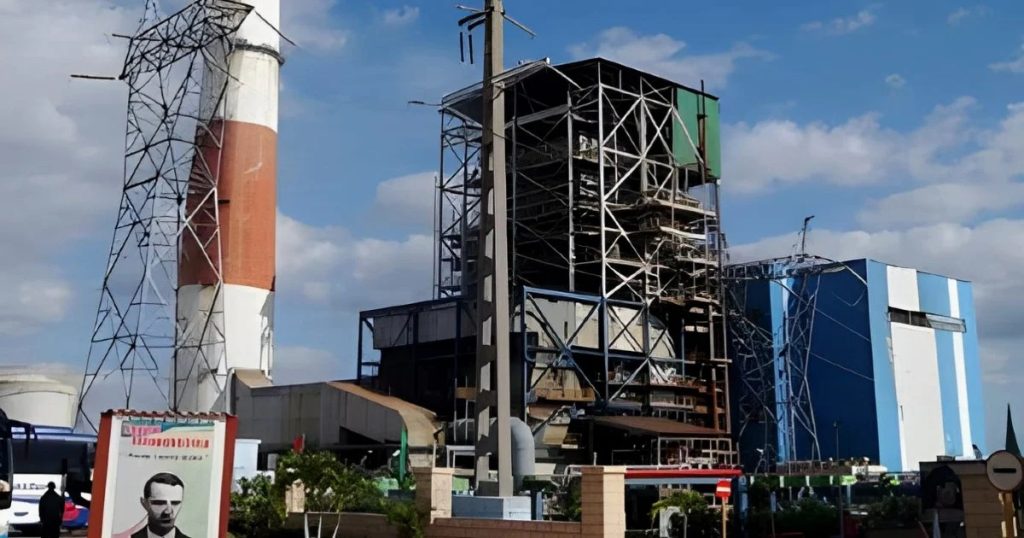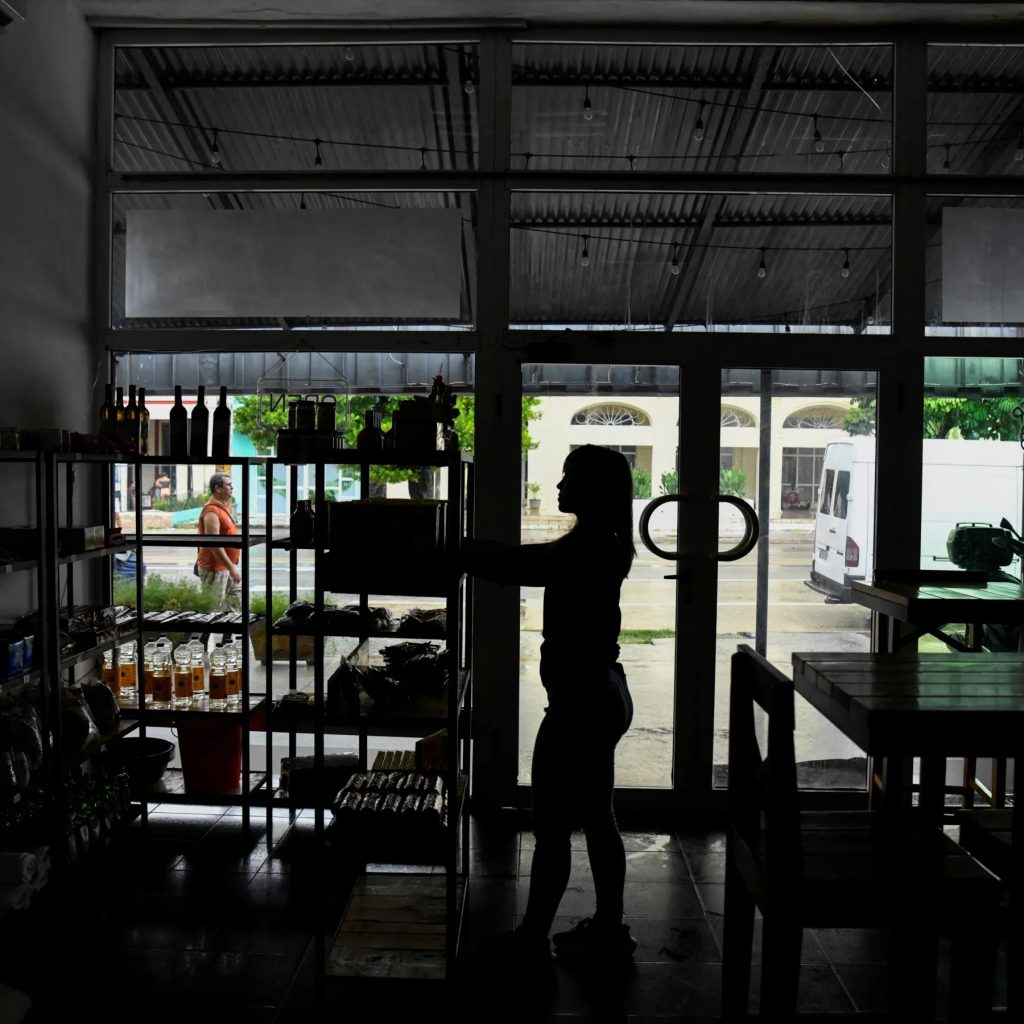
Blackouts in Cuba? It’s the economy (and the embargo), stupid!
The last two weeks have seen a flurry of articles in the Western press about Cuba’s large-scale blackouts that left 10 million people without power. While Cuban leaders and official press point the accusing finger at the ongoing, ever fiercer U.S. embargo, most mainstream and dissident media blame the Cuban government for the disinvestment and operational failures that led to the crisis, including missed opportunities for foreign investment projects.
Associated Press, for example, wrote that the crisis, according to some experts, “may not have happened if the government had built out more solar power to boost its failing electric grid as promised,.” Always quoting “experts” that imply “authority figures” that the reader should believe, they say that “the government hasn’t updated its internal policies regarding foreign ownership and private financing, especially for critical solar projects, and are still focused on petroleum fuels.”
AP quotes Dan Whittle, associate vice president of the Environmental Defense Fund, an advocacy group: “If you had extensive buildout of solar, solar farms, residential solar and storage, for the most part, you could avoid the problems they have.”
As part of the 2015 Paris Agreement, the Cuban government committed to 37% of its power coming from renewable energy by 2030, an ambitious increase from an initial 24% target. But that was in 2015, when the Obama Administration opened the window to travel and some investments in Cuba, while Cuba began its experiment of increasing its private sector. Travel, tourism, remittances, exports all boomed for a brief two years, until in 2017 the Trump epidemic hit Cuba and in 2020 the other one -COVID-19 – followed, two-punches that sent Cuba to the ropes. But it was not knocked out.
 This article fails to say that until recently, the capital costs for installing one MW of solar energy was equal to or greater than those for a fuel generator. This has changed drastically because of Chinese overproduction of solar panels, which has created a promising opportunity for Cuba and other countries to invest in more solar energy. Alfredo López, the chief of the nation’s electric utility, said to the press that 26 solar projects are currently being installed in different provinces, while regulations are being changed to encourage private businesses and households to purchases solar panels. The problem remains that electric utility rates are subsidized and paid by most consumers in devaluated Cuban pesos, while solar systems are sold in hard currency, which makes recovery of the investment a long process.
This article fails to say that until recently, the capital costs for installing one MW of solar energy was equal to or greater than those for a fuel generator. This has changed drastically because of Chinese overproduction of solar panels, which has created a promising opportunity for Cuba and other countries to invest in more solar energy. Alfredo López, the chief of the nation’s electric utility, said to the press that 26 solar projects are currently being installed in different provinces, while regulations are being changed to encourage private businesses and households to purchases solar panels. The problem remains that electric utility rates are subsidized and paid by most consumers in devaluated Cuban pesos, while solar systems are sold in hard currency, which makes recovery of the investment a long process.
Then there is John Kavulich, president of U.S.-Cuba Trade and Economic Council Inc., who praised the US government for changing policies two years ago enabling U.S. investment in private Cuban companies – but not state-owned companies such as those that manage public utilities. Yes, there are some 100% foreign owned companies that generate solar energy for specific markets such the Mariel Special Development Zone, but few Cuban small and medium sized enterprises could benefit from U.S. investments in the energy sector. Nevertheless, he is correct in saying that the Cuban government has failed to issue regulations necessary to allow the money to start flowing to the private sector.
It is true that Cuba has struggled with frequent power outages for decades. Officials cite aging and insufficiently maintained power plants, increased demand for air conditioning and a lack of fuel for the generation of electricity.
Human-driven climate change has contributed to extreme weather events that also regularly affect Cuba’s electrical grid. This is the case of Hurricane Oscar, which battered Guantanamo in Eastern Cuba just as the complete blackout had the entire country without power.
The fact remains that 95% of the country’s power comes from burning fossil fuels. Much of that is from burning crude oil, a particularly polluting form of generation. But some fail to mention that the heavy crude is domestic production for Cuba, and similar to other crude oil from the Gulf of Mexico which Mexicans use for generation as well. The other generating plants in Cuba use imported fuel oil or diesel, mostly from Venezuela, Mexico and Russia, paid for in hard currency or export services.
According to AP, the share of Cuba’s electricity that comes from renewable sources like solar and burning sugar cane waste has increased only slightly, from 3.8% in 2012 to 5% as of 2022, according to research from the Sabin Center for Climate Change Law at Columbia Law School and EDF. That’s a very small change during a time when solar and wind have ramped up sharply globally and costs have come down. But for a country with practically no reserves, domestic savings or foreign investment, that is not much comfort.
AP also reports that one of Cuba’s biggest trading partners, China, makes 80% of the world’s solar panels, according to the energy data and analytics firm Wood Mackenzie, and they are inexpensive. China committed in March to building 92 solar farms on the island that are expected to add more than 2,000 megawatts of energy, and reports in June said China donated three solar parks expected to add 1,000 more. But the parks have yet to be deployed. The whole country had only 252 megawatts of solar power at the end of 2022.
What about the project to build four Russian units in Cuban thermoelectric plants?
Some have referred to the failure of undertaking the Russian project to build four 200MW units in two Cuban thermoelectric plants as an example of the incompetence or lack of will of the Cuban government. Tatiana Amarán Bogachova, Vice-Minister of Cuba’s Ministry of Energy and Mines, interviewed by Cubadebate, said that it is obvious that there has been lack of information about the project.
The project to build three 200 MW units in the Santa Cruz del Norte and another in the Mariel thermoelectric plants is based on a credit of 1.2 billion euros provided by the Russian government. This would cover 90% of the cost of the project and the Cuban part is obligated to pay in advance the remaining 10%. The project preparation tasks (feasibility, engineering and organization studies, etc.) were carried out by Russian and Cuban companies between 2016 and 2019. The time might seem excessive, she said, but the complexity of the project implied modifying the location of one of the blocks, and solving the many technical aspects of the studies.
In early 2020, with the COVID-19 epidemic, airports and borders were closed, flights suspended and the technical exchanges slowed down. On top of that, the Cuban economy fell even more than the global economy, which made it impossible to raise the hard currency required for the Russian part to access the government credit. During 2020 and 2021 Cuba developed its own vaccines and immunized its entire population while helping other countries, but the rest of the economy floundered. Then in 2022 the conflict between Russia and Ukraine marked another delay in this important project.
In summary, the funds credited have not been spent for other uses, Cuba simply has not been able to continue with the project. Those 1.2 billion euros are meant to finance the work undertaken by the Russian companies involved in the project, and will be managed by the Russian part when it does become available.
Is the U.S. embargo a convenient excuse?
That’s what many in the mainstream press assert. Yet José Manzaneda, coordinator of Cubainformación TV, provides another view. He reminds us that the US Department of the Treasury pursues and sanctions shipping companies that transport fuel to Cuba. It tracks all international banks that dare to transfer funds to Cuban institutions or grant credits for the purchase of foods and medicines, inputs and parts. In five years, US sanctions wiped out 90% of Venezuela’s oil production, which used to be Cuba’s main supplier.
Furthermore, the Trump and Biden Administrations have managed to impact every one of Cuba’s sources of foreign earnings: remittances from Cuban immigrants were banned for three years and limited in amount and destination afterwards; European and Latin American tourism has plummeted after the US eliminated visa waivers for those that travel to Cuba; travel by US nationals barely survives the restrictions on individual travel, lodging in hotels and other expenditures for public goods and services; and the comprehensive application of the Helms-Burton Act has cut the flow of foreign investment at the root.
Add to this the rise in the cost of all Cuban imports due to the conventional US trade embargo; the penalizations and pressures on companies and countries that want to trade with the Island; or the impossibility of Cuba´s access to development loans in order to modernize, for example, its energy sector, thanks to US influence on international lending institutions.
The electricity crisis faced by Cuba is the consequence of the sum of all of these factors. But little mention of this can be found in the mainstream press. One part describes the situation as it is, a dramatic reality pushed to the limit, not sustainable. But, what about the causes? The criminal policies that have brought this about? Barely a word.
Silencing the economic war that the US wages against Cuba is the only way to justify it, and thus attribute its consequences to “65 years of Communist rule”.

